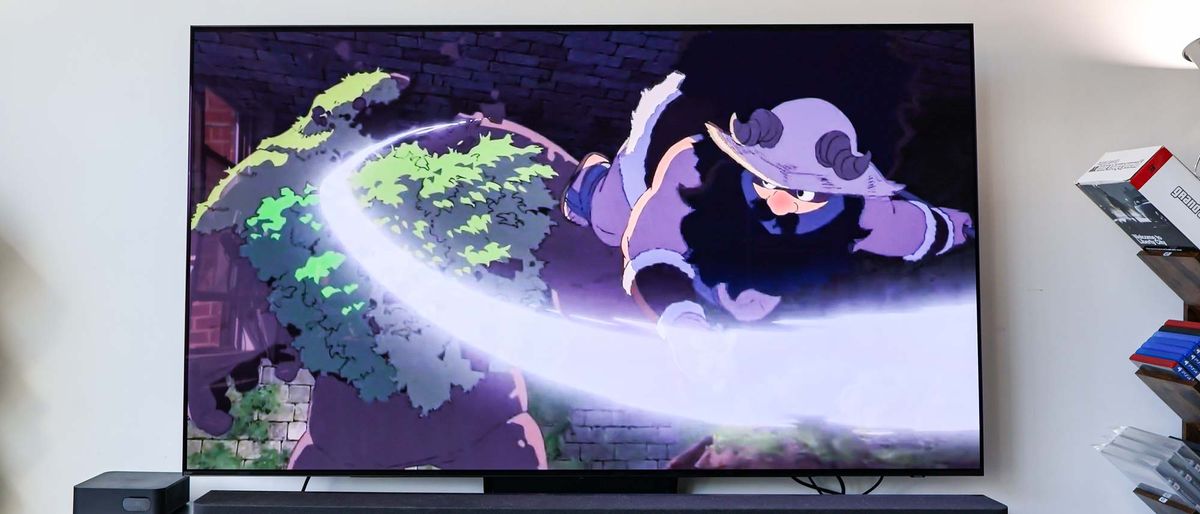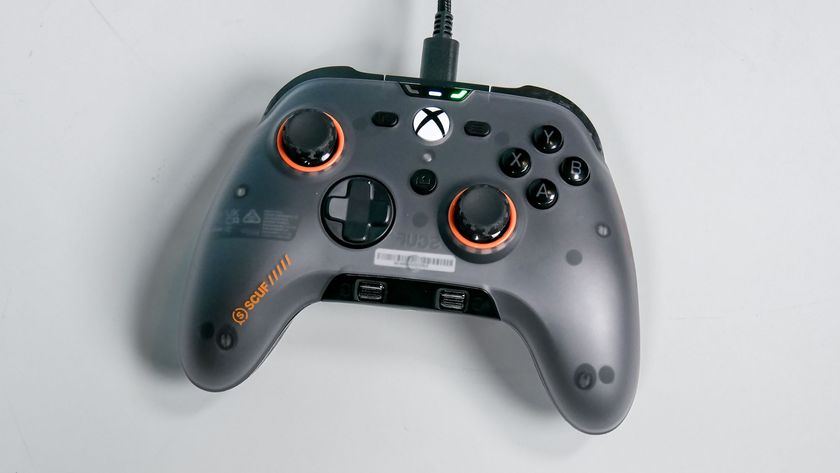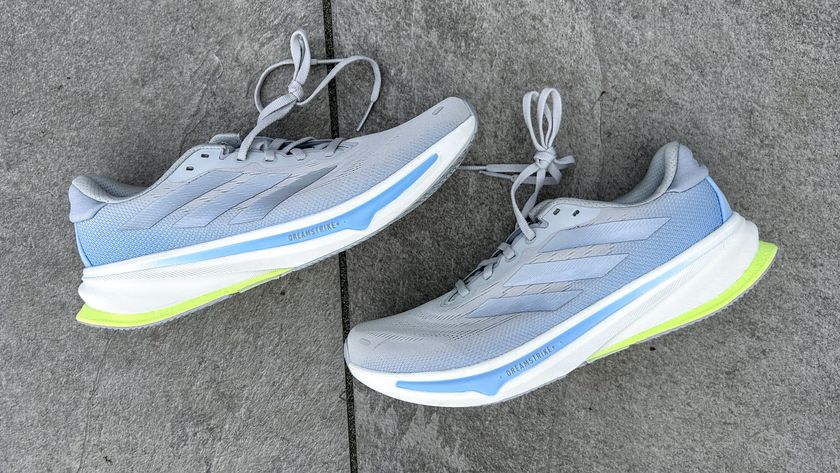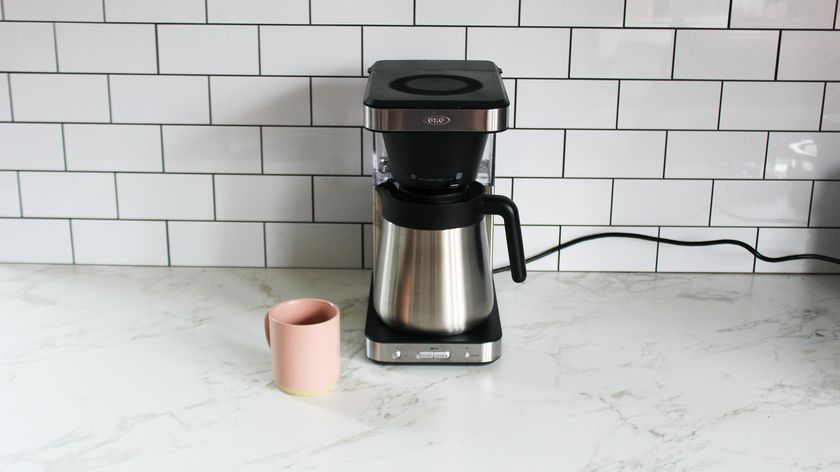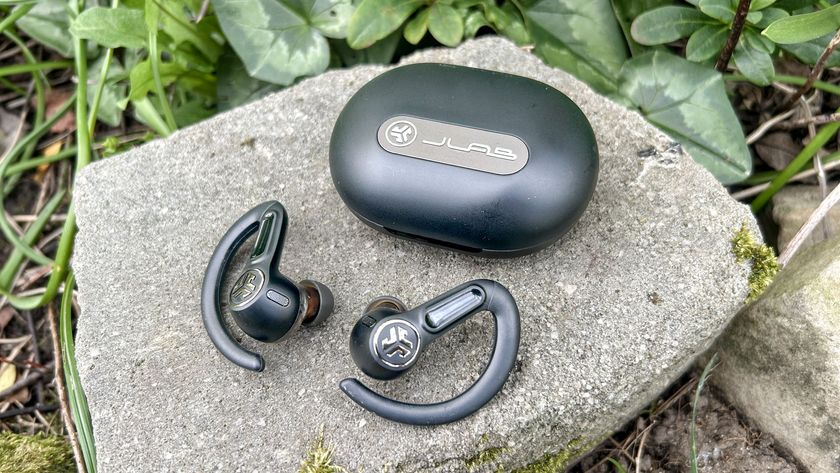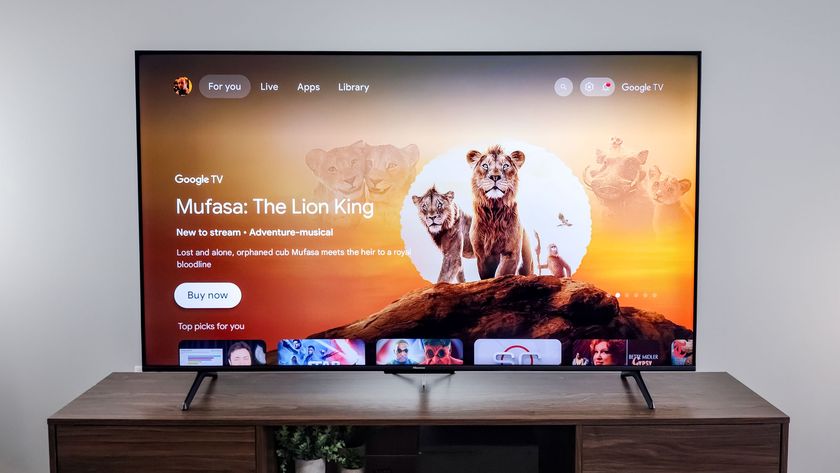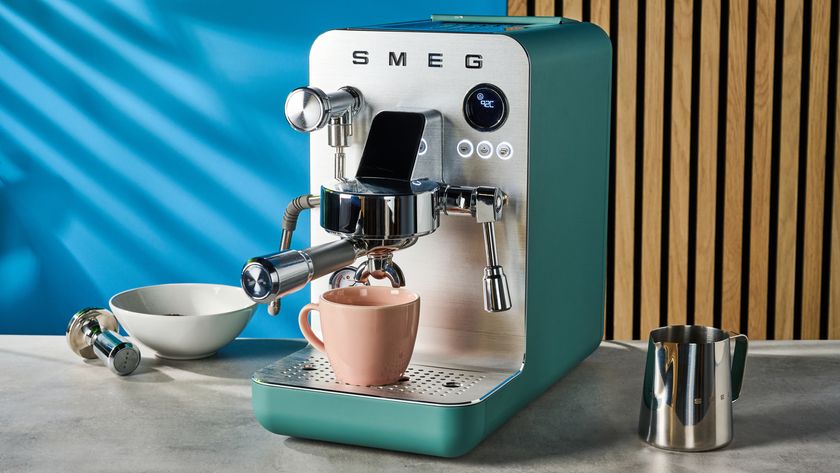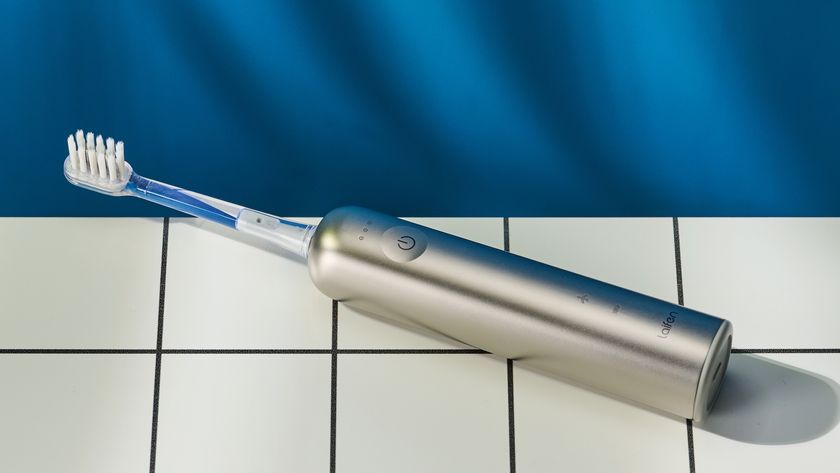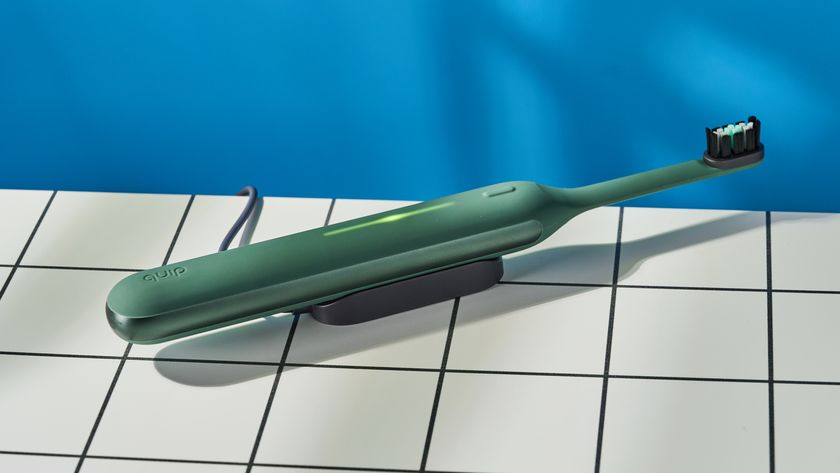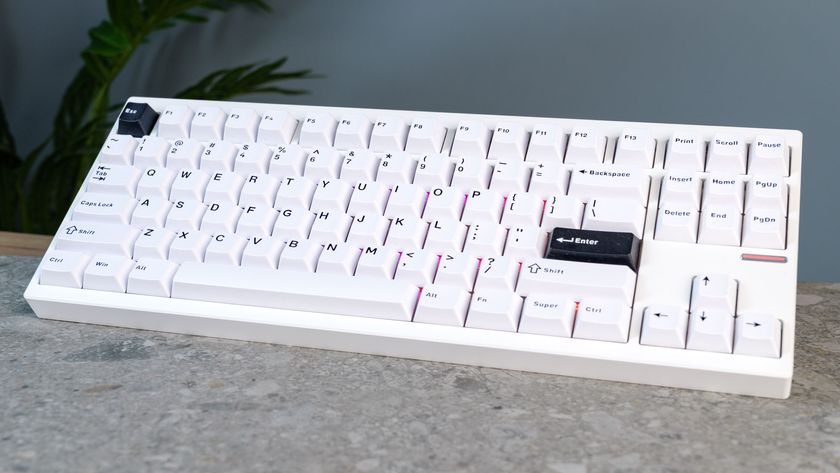Tom's Guide Verdict
The Samsung S90D is a sensibly priced OLED with incredible contrast, some of the highest luminance on an OLED, and a range of awesome gaming features. It does drop Dolby Vision support, and Tizen OS isn’t exactly the most fluid TV interface, but in the face of these setbacks it’s a remarkable offering that’s better than most of its competition.
Pros
- +
Incredible off-axis viewing
- +
High brightness for an OLED
- +
Super slim with pedestal design
- +
Effective cloud gaming support
- +
Deep and rich black levels
Cons
- -
No Dolby Vision
- -
Tizen OS isn’t the most fluid OS
- -
Varied panel types per size
- -
No ATSC 3.0 tuner
Why you can trust Tom's Guide
The Samsung S90D OLED TV knocks it right out of the park. It offers exceptional black levels and stunning, vibrant colors on a platform that’s rich with unending content. I spent nearly two weeks diving deep into this mid-range OLED to find out all that it offers at its price point and I was pleasantly surprised by its potential.
I might go as far as to say that the S90D is one of the best TVs you can buy right now. That’s due to the S90D’s multifaceted range of features, including a full Gaming Hub with cloud gaming platforms and punchy audio with Dolby Atmos support (and soon Eclipsa audio, too). It’s also home to some of the highest brightness we’ve ever tested in an OLED TV.
So why not a perfect 5-star score? One of its biggest drags is the variations in panel type across sizes. Because the TV uses two different types of panels, you’ll need to know which size screen comes with what type of panel if, say, you specifically want a QD-OLED instead of a regular WOLED TV. I don’t think this is an outright deal-breaker, but it is something that needs to be considered.
All in all, this is one of the best OLED TVs I’ve tested and, if you don’t mind the lack of Dolby Vision support, it’s almost certainly worth a spot in your living room.
Samsung S90D OLED TV review: Price and release date
The Samsung S90D originally launched in 2024 and sits in between the cheaper Samsung S85D OLED TV and the flagship Samsung S95D OLED TV. It comes in a wider range of sizes at cheaper prices relative to its flagship, which start at $1,399 ($899 on sale) for the 42-inch version.
For this review, we tested the Samsung S90D in its 65-inch configuration. If you’re wondering which model would suit you best, check out our guide on figuring out which size TV is right for you.
- Samsung QN42S90DAE (42-inch): $1,399 | Sale: $899
- Samsung QN48S90DAE (48-inch): $1,599 | Sale: $999
- Samsung QN55S90DAE (55-inch): $1,999 | Sale: $1,199
- Samsung QN65S90DAE (65-inch): $2,699 | Sale: $1,499
- Samsung QN77S90DAE (77-inch): $3,699 | Sale: $2,299
- Samsung QN83S90DAE (83-inch): $5,399 | Sale: $3,299
These prices put the S90D in direct competition with many of the best OLED TVs, like the LG C4 OLED, the Panasonic Z85A and the Sony Bravia 8.
While each size option in the S90D series features the same slate of features, it's worth noting that they might perform differently depending on the size chosen and the region it's purchased. For North American shoppers, only the 55-, 65- and 77-inch models feature Samsung's QD-OLED panel. The 42-, 48- and 83-inch versions of the S90D don't use quantum dot-equipped panels and leverage standard WOLED panels instead. Since we tested the 65-inch S90D in the United States, our test results only reflect models within the 55- to 77-inch range.
If you live in the U.S. and you're hoping to take advantage of the added brightness and color volume associated with QD-OLED, you'll have to shop within this range. This is not necessarily the case across European countries and Australia, though it's a safe bet that if you're purchasing the S90D in 52, 48 or 83 inches, you're not getting a QD-OLED panel.
Samsung S90D OLED TV review: Design
The S90D sports an ultra-slim frame that’s just over an inch in depth without the stand, giving the TV an almost artwork-like appearance. While this makes it ideal for wall-mounting, the TV comes with a uni-body pedestal mount that can be attached behind the TV. It’s not quite as fancy as the stand on the Panasonic Z95A OLED, which rotates on a 180 degree angle, but it’s still nicer-looking than most other TVs in its range. If you’d prefer to wall-mount, it’s VESA compatible at 300 x 200mm, however.
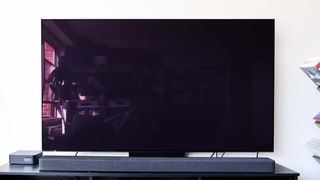
Acting as the brain of the S90D is the second-generation NQ8 AI processor that handles 4K upscaling, audio up-tuning, picture enhancements, voice assistants and more. Speaking of audio, the S90D punches up to a 2.1-channel system with 40W output, which is nothing to scoff at. This spec hasn’t seen an upgrade over its predecessor, but it's more than enough juice for most people.
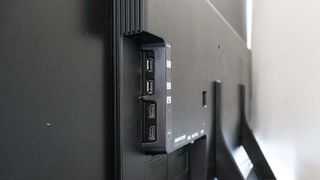
As far as ports are concerned, you have plenty of options: Like its predecessor, the S90D comes equipped with four total HDMI 2.1 ports, making it a great fit for gamers with more than one console. It’s also got an ethernet port, two USB-A connections, a digital audio output, and one RF input for cable TV. Of course, one of its four HDMI 2.1 ports is eARC. Aside from these physical inputs, the S90D also has both Bluetooth 5.2 and Wi-Fi 5, which aren’t the newest specs, but still work well.
Samsung S90D OLED TV review: Performance
I threw a lot of different content at the S90D, attempting to get a good feel of its color accuracy, glare mitigation, and black levels. OLEDs are generally known to have serious control over the darker parts of the screen, making scenes set in space, dark alleys, or the like feel far more immersive and this shows on the S90D. Content with darker scenes, like “The Penguin” and “Star Wars: Skeleton Crew,” proved major highlights.
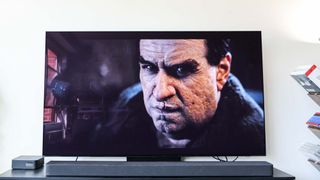
A great example of this comes in the second episode of “Skeleton Crew,” wherein the young crew of the Onyx Cinder first arrive at the seedy Starport Borgo. The stunning, darkly-lit locale, set against the endless cosmos, is totally jaw-dropping on the S90D thanks to its deep and rich black levels as well as its ample color coverage.
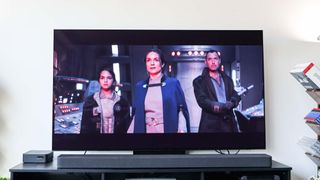
To really appreciate its excellent colors, thanks in large part to the quantum dots baked into its OLED panel, I had to give some anime a try and “Delicious in Dungeon” pulled me into a whole new world of wonder. Animated food popped right off the screen to the point where I could almost smell it, adding a bit of weightiness to on-screen delicatessens. I also threw on “Uzumaki” to check the S90D’s performance during black and white content. It looked crisp thanks largely to the S90D’s anti-reflective coating.
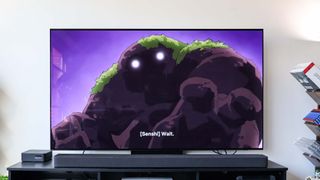
One of the major downsides to the S90D is no Dolby Vision support. While it does come equipped with HDR10+ and HDR10, there’s very limited content and even platforms that support it, with Amazon Prime, Netflix, and YouTube being the only ones with it right now. I watched a couple of shows and movies in the HDR10+, like “Ghost in the Shell 2: Innocence,” “Severance,” and “Jack Ryan,” with the latter two being the most to benefit from it.
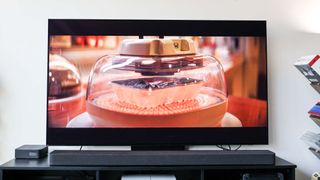
All told, the S90D looks incredible, thanks in part to its perfect black levels and anti-glare capabilities. Some A/V enthusiasts and gamers might miss Dolby Vision support, but even without it the S90D still stuns with its high brightness and color performance.
Samsung S90D OLED TV review: How we test
We follow a standard testing protocol for every TV we review at Tom’s Guide. Our benchmarks include a series of technical and subject tests designed to rate the set’s performance. For our technical tests, we use a Jeti spectraval 1501-HiRes spectroradiometer, a Klein K10-A colorimeter, a Murideo 8K-SIX-G Metal pattern generator, and Portrait Displays’ Calman TV-calibration software to take measurements. We also use a Leo Bodnar 4K Input Lag Tester for determining the TV’s gaming prowess.
Subjective tests vary based on the reviewer, but usually feature anecdotes from a diverse selection of movies, TV shows, and other content reflecting the types of things you may actually want to watch on the TV.
Samsung S90D OLED TV review: Test results
How does it stand against the competition? We put the Samsung S90D OLED TV up against similarly priced OLED TVs as well as Panasonic’s pricier flagship OLED.
| Row 0 - Cell 0 | Samsung S90D | LG C4 | Sony Bravia 8 | Panasonic Z95A |
| SDR Brightness (10%, in nits) | 476 | 332 | 287 | 292 |
| Delta-E (lower is better) | 1.26 | 1.8201 | 3.33 | 2.33 |
| Rec. 709 Gamut Coverage | 99.33 | 98.91 | 99.66 | 99.22 |
| HDR Brightness (10%, in nits) | 1187 | 1148 | 816 | 1625 |
| UHDA-P3 Gamut Coverage | 99.95 | 98.15 | 99.11 | 98.34 |
| Rec. 2020 Gamut Coverage | 90.58 | 72.27 | 75.01 | 74.44 |
| Input latency (in milliseconds) | 9.2 | 9.2 | 12.6 | 12.6 |
Looking at the numbers, the Samsung S90D comes across as the clear winner in nearly every category, especially compared to its biggest rival, the LG C4 OLED. In both HDR and SDR, the S90D offered a higher peak brightness when measured in a 10% window, though the difference in brightness is especially noticeable when watching non-HDR content. In practical terms, that means sports, cable shows and over-the-air broadcasts should look brighter and should be easier to see in broad daylight.
When it comes to color accuracy, we again see the Samsung S90D at the top of the pack. It’s not only capable of producing a wider array of colors than the competition, but it can do so with significantly more accuracy (a metric we measure with Delta E). Here lower is better, and the Samsung S90D hits an almost all-time low of 1.26. It’s just a shame that you won’t be able to watch movies in Dolby Vision and are instead limited to the standard HDR10 and relatively basic HDR10+ standards.
To measure how futureproof this TV is, you want to look at the Rec.2020 color metric. Currently most movies are color graded in the UHDA-P3 color gamut, but in the future more creators will shift to Rec.2020. Having a wider color gamut here means you’ll be able to see more colors (90.58% according to our measurements) when that happens.
The one TV that eked ahead of the Samsung S90D in our testing was the Panasonic Z95A, which did hit a peak brightness of over 1,600 nits in HDR. However, it’s worth noting that even when it’s on sale, the Z95A sells for $2,499 — a full $1,000 more than the Samsung S90D when it’s on sale. Given the price difference, the lower brightness S90D still feels like a better deal.
Samsung S90D OLED TV review: Audio
I was pleasantly surprised by the Samsung S90D’s audio performance. Its 40W output can really be felt even in a much larger room. Of course, you’ll get much better mileage out of a proper audio system or even one of the best soundbars, but if you don’t want to spend the extra money, its base speakers do an OK job.
To that end, you probably want to do some tweaking to the sound right out of the box. Thankfully, there are several additional settings to play with, allowing you to expertly fine tune your sound in a number of ways. The two in particular you’ll want to pay attention to are auto volume and Amplify, the latter of which can be found in the sound settings. These settings will help you hear dialogue slightly better and balance the audio between sources so you don’t have to constantly raise or lower the volume when changing inputs. There’s also a Game Mode that boosts audio when playing PS5 or Xbox Game Pass that’s good, too.
Samsung S90D OLED TV review: Interface and apps
If there’s any real soft spot besides the lack of Dolby Vision on the S90D, it’s the TV’s smart platform. Although Samsung’s Tizen OS offers tons of free content, access to the best streaming services and cloud gaming functionality, it’s not very easy to navigate, in general.
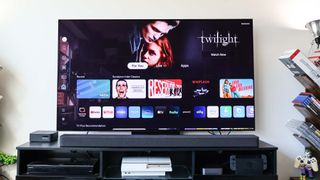
I’m personally a big fan of both Roku and Google TV, as they offer a more streamlined experience thanks to their easy-to-use interfaces. Tizen OS, on the other hand, has a bit of a learning curve. Finding and downloading apps can take longer than expected, and the experience often feels tedious.
But looking past its issues with UI and UX, Tizen OS is rich with gaming features, which shouldn’t be left unsaid. It offers most of the best cloud gaming services, like Xbox Game Pass and Nvidia GFeForce Now, plus Samsung is making its own games for its TVs.
Samsung S90D OLED TV review: Remote
Samsung makes one of the best remotes in the TV industry — it’s simple, feels good to hold and even recharges via solar power. Even so, I wish it were a bit more user-friendly. My big gripe with the Solar Cell remote is that it fuses the input selection and system settings, which can lead to confusion, and slows down the process when you want to jump from one input to another.
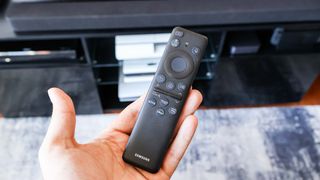
The other issue is that it can be hard to find in a dark room because the buttons aren’t backlit. I’m spoiled with the Roku Voice Remote Pro, which now has the feature, and this feels like something Samsung ought to consider in future remotes.
Samsung S90D OLED TV review: Verdict
I enjoyed my time with the Samsung S90D OLED TV. It offers a lot of value for the price and pushes out some serious luminance for its design. Its audio system is particularly super, and I couldn’t get enough of Samsung’s Gaming Hub, a place that you could easily lose hours of time both across Xbox Game Pass and Tizen’s own internal games, like The Six.
Unlike many other OLEDs in the space, the S90D also comes equipped with ample glare mitigation — making it easy to see in both light and dark environments — and its pedestal feet and super slim frame look great. You won't have to worry too much about where you set it up either, as it’s got great off-axis viewing and a wide color gamut.
But it’s got competition, and that competition has Dolby Vision. If that’s a must-have feature, consider the LG C4 OLED, which is just as remarkable. As noted in our LG C4 vs Samsung S90D faceoff, the S90D still comes out on top despite its setbacks, like the oft-infuriating Tizen OS navigation, plus the absence of both Dolby Vision and an ASTC 3.0 tuner.
While the larger and smaller iterations should still perform similarly, we do highly recommend buying the S90D in the 55-inch or 65-inch models to get the absolute best quality (and quantum dots in your OLED TV). It’s a surefire hit that’s made all the better thanks to new price slashings.

Ryan Epps is a Staff Writer under the TV/AV section at Tom's Guide focusing on TVs and projectors. When not researching PHOLEDs and writing about the next major innovation in the projector space, he's consuming random anime from the 90's, playing Dark Souls 3 again, or reading yet another Haruki Murakami novel.
